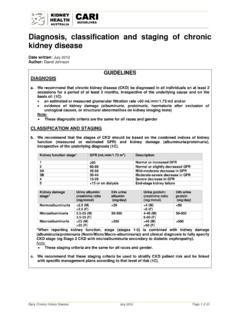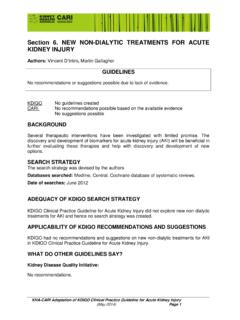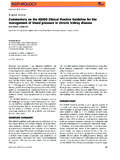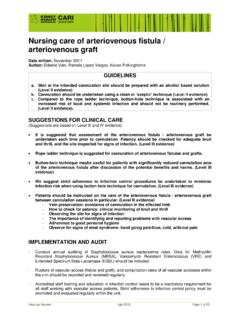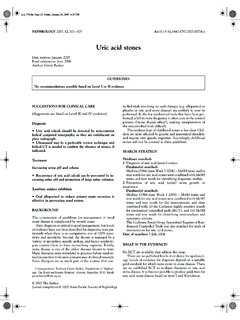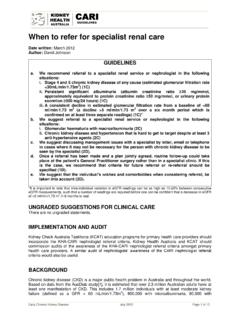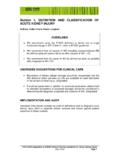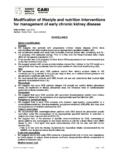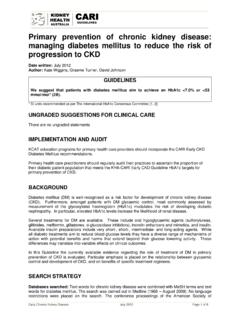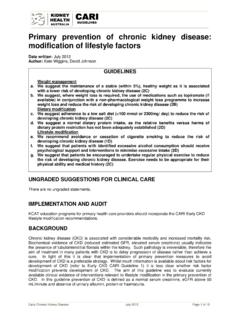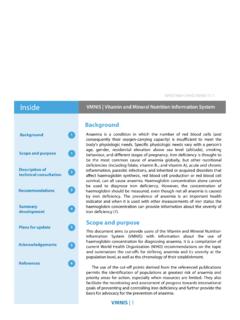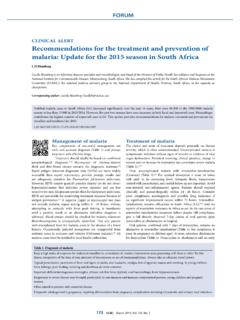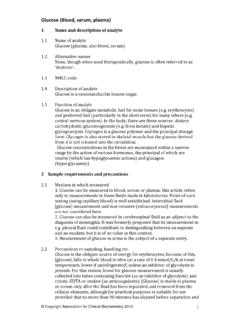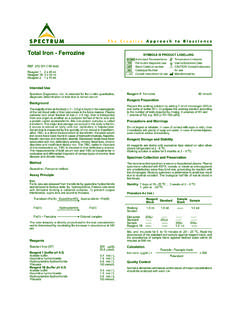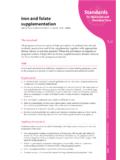Transcription of International treatment guidelines for anaemia in …
1 Editorials International treatment guidelines for anaemia in chronic kidney disease . what has changed? Balancing the risks and benefits of erythropoietin-stimulating agents and iron therapy O. Robert J MacGinley ne in nine Australians has chronic kidney dis- evaluate the outcomes of higher versus lower haemo- MB BS, FRACP, Nephrologist and ease (CKD),1 although the condition may often globin targets, using recombinant human erythropoietin, Convenor of Medicine 1 not be recognised in primary There are found the unexpected reverse outcome of negative Rowan G Walker five stages of CKD, ranging from Stage 1, in which effects (increased cardiovascular events and mortality)
2 In MD, FRACP, MPH, Director and Professor 2 patients have normal renal function but urinary abnor- patients randomly assigned to the higher ,9. malities, structural abnormalities or genetic traits point- The evidence now seems to suggest that haemoglobin 1 Deakin Medical School, ing to kidney disease, through to Stage 5, in which target levels between 100 and 115 g/L should be the aim Geelong, VIC. patients have end-stage for patients with CKD, and certainly not levels > 130 g/L,10. 2 Department of Renal Although anaemia in patients with CKD is multifac- which have the potential to cause harm.
3 In fact, the Medicine, Alfred Hospital, Melbourne, VIC. torial in origin, it is primarily associated with relative KDIGO guideline reaffirms the very strong (Grade 1A). @ erythropoietin production deficiency3 as the glomerular KHA-CARI recommendation of not targeting haemo- filtration rate (GFR) falls. Once the estimated GFR globin concentrations > 130 ,10 There are also newer trends below 60 mL/ m 2 (Stage 3a CKD), cautionary recommendations, not covered by the KHA- doi: erythropoietin production by the kidneys falls, and anae- CARI guidelines , regarding ESA use in patients with mia may develop.
4 Active malignancy (1B), a history of stroke (1B) or a The history of anaemia management in CKD and history of malignancy (2C), where there is greater poten- associated clinical practice guidelines has been one of tial for harm. contradiction and perceived industry The The recommendations in the KDIGO guideline relat- publication in August 2012 by the Kidney Disease: ing to the use of iron supplementation are similar to Improving Global Outcomes (KDIGO) group (an inter- those in the KHA-CARI They include the national collaboration of nephrologists) of a guideline recommendation that oral iron supplementation is inad- that updates and informs clinical practice in this area 5 equate compared with injectable iron.
5 This is problem- was therefore welcome. atic for most general practitioners, as intravenous iron The KDIGO guideline contains 47 recommendations cannot be administered in general practice, due to the with varying grades of evidence (Box).5 It is noteworthy need for monitoring. However, intravenous iron therapy that the conclusions, recommendations and ungraded may sometimes be arranged for the patient at a local suggestions for clinical practice in the KDIGO guideline hospital. Further, the KDIGO guideline recommends the are largely consistent with those currently provided in use of iron indices to help guide therapy, with considera- the Kidney Health Australia Caring for Australasians tions of infection risk from excess iron and suboptimal with Renal Impairment (KHA-CARI) ,7 Of ESA responsiveness.
6 Particular note, the KDIGO guideline takes into account the importance of balancing the risks and benefits of erythropoietin-stimulating agents (ESAs) Number of KDIGO guideline recommendations,5 by grade and iron therapy. of evidence*. A key aspect of the KDIGO guideline is that it 18. Number of recommendations recommends more caution in the use of erythropoietin. 16. The cloning of human erythropoietin 30 years ago was 14. The Medical Journal of Australia ISSN: 0025- 12. an important breakthrough that led to the clinical devel- 729X 22 July 2013 199 2 84-85 10.
7 The Medicalopment Journalofofrecombinant human erythropoietin and thus Australia 2013 8. to the use of ESAs for treating anaemia in patients with 6. CKD. Numerous observational studies suggested that 4. Editorial patients with lower targeted haemoglobin levels had 2. worse outcomes than those with higher This 0. conclusion was supported by the clinical consequences Not graded 2D 2C 1D 1C 1B 1A. of anaemia (including fatigue, exercise intolerance, cog- Grade of evidence nitive impairment and exacerbation of cardiovascular disease)3 and led clinicians to virtually demand ESAs for KDIGO = Kidney Disease: Improving Global Outcomes.
8 * Using the Grading of Recommendations Assessment, Development, and Evaluation the treatment of CKD-associated anaemia . It was there- (GRADE) system.. fore ironic that the first randomised controlled trials to 84 MJA 199 (2) 22 July 2013. Editorials The KDIGO guideline also covers the use of red cell at that time; and, lastly, (iv) be appropriately cautious transfusion in patients with CKD,5 again emphasising with the use of transfusions (blood and platelets) if the importance of balancing risks and benefits. For transplantation potential exists.
9 Example, for patients who may undergo future organ Competing interests: No relevant disclosures. transplantation, red cell transfusion carries a risk of Provenance: Commissioned; externally peer reviewed. sensitisation to various tissue-type antigens; and, for all 1 Kidney Health Australia. Key chronic kidney disease (CKD) statistics in patients, excessive blood transfusions can lead to iron Australia. tabid/622 (accessed May 2013). overload diseases. Symptom change (eg, decrease in 2 Razavian M, Heeley EL, Perkovic V, et al. Cardiovascular risk management in fatigue) in an individual patient, rather than a haemo- chronic kidney disease in general practice (the AusHEART study).
10 Nephrol Dial globin concentration threshold, is a better measure of Transplant 2012; 27: 1396-1402. successful improvement. 3 Mercadal L, Metzger M, Casadevall, et al. Timing and determinants of erythropoietin deficiency in chronic kidney disease. Clin J Am Soc Nephrol 2012;. Importantly, the first section of the KDIGO guideline 7: 35-42. considers the diagnosis and evaluation of anaemia in 4 Goldsmith D. 2009: a requiem for rHuEPOs but should we nail down the later stages of CKD (Stage 3a and beyond), where coffin in 2010? Clin J Am Soc Nephrol 2010; 5: 929-935.
